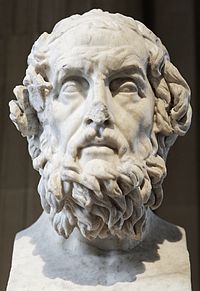
Photo from wikipedia
This review again reflects the exciting chronological and geographical range within which Classicists operate and the diverse approaches and disciplinary knowledge that illuminate the ancient world for us. Alexa Piqueux's… Click to show full abstract
This review again reflects the exciting chronological and geographical range within which Classicists operate and the diverse approaches and disciplinary knowledge that illuminate the ancient world for us. Alexa Piqueux's monograph, The Comic Body in Ancient Greek Theatre and Art, 440–320BCE, explores how costume and gesture entwine with speech to bring alive the comedy body, drawing equally on images painted on vases and extant texts of Old and Middle Comedy. One of the greatest difficulties of working with these two data sets is that the texts originate in Athens while the majority of vases that depict comedy were actually made in southern Italy and Sicily. This necessitates a first chapter that investigates the ‘Italianness’ of these vases, the extent to which they might be directly reflective of Attic comedy, drawing on that comedy more generally for thematic inspiration, or showing adaptation of Greek comedy and its performance in Italian contexts. This might involve looking for clues in the images of the construction of temporary stages on which travelling troupes might have been performing in Italy (57) or considering the way in which particular comic themes, that seem so peculiar to Athens, might have played to different audiences in Italy by appealing to contentions within local societies, for example generational divides in Paestan society (66).
Journal Title: Greece and Rome
Year Published: 2023
Link to full text (if available)
Share on Social Media: Sign Up to like & get
recommendations!